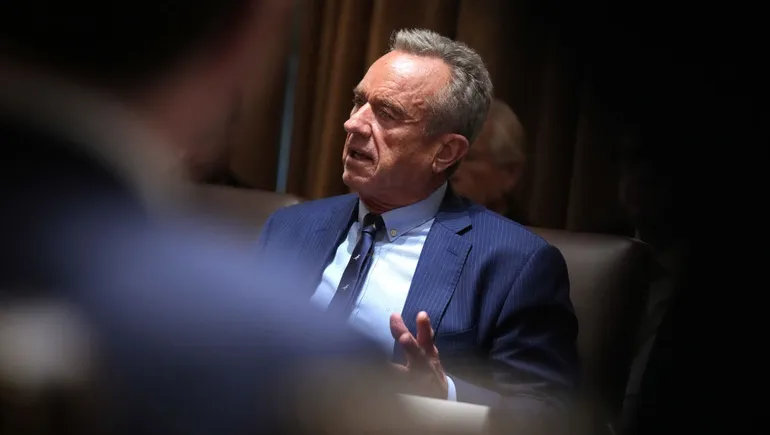The Trump administration aims to slash the budget of the HHS by roughly one-third and shutter a number of departments as part of a broad reorganization of federal health agencies, according to a draft budget document obtained by Healthcare Dive.
If enacted, the proposed budget would bring further change to HHS after Secretary Robert F. Kennedy Jr. ordered a sweeping restructuring that will shrink the department’s workforce by a quarter, reduce the divisions within it from 28 to 15 and halve the number of regional offices.
The internal document, which is labeled “pre-decisional” and dated April 10, would eliminate a broad swath of programs, including Head Start, which provides early child care to low-income families, and initiatives aimed at HIV/AIDS prevention and mental health.
The Health Resources and Services Administration, the Substance Abuse and Mental Health Administration, the Agency for Healthcare Research and Quality, and the Administration for Community Living would also be cut under the plan.
Some programs would be consolidated under the Administration for a Healthy America, a new HHS division proposed by Kennedy that would receive $14 billion in budget authority under the plan.
All told, the HHS’s budget would be reduced from roughly $120 billion in fiscal year 2024 to about $80 billion in fiscal year 2026. The draft’s existence was first reported by The Washington Post. Sent by the Office of Management and Budget, it appears to be what’s known as a “passback,” or a reply to agency budget requests.
The changes it proposes would ultimately need to be approved by Congress. HHS did not return Healthcare Dive’s request for comment.
The preliminary budget would reduce funding for the National Institutes of Health by roughly 40% and the Centers of Disease Control and Prevention by about 44%. It would eliminate chronic disease programs, even as Kennedy prioritizes addressing what he calls an “epidemic” of chronic disease in the U.S.
The budget plan assumes a 15% cap on indirect research costs will continue to be implemented at the NIH, although that policy has been held up in court. Most recently, a district judge ruled to permanently block the funding cap.
Funding for rural hospitals would be hit particularly hard. The draft budget would eliminate Rural Hospital Flexibility Grants, State Offices of Rural Health, At-Risk Rural Hospitals Programs Grants and the Rural Residency Development Program.
Under a section for the CMS, the proposed budget says it assumes a decline in enrollment in Affordable Care Act exchanges due to the “expiration of the enhanced premium tax credits” that are set to expire at the end of this year. However, it’s an open question whether lawmakers will decide to extend the subsidies. Although Republicans have argued for cutting the subsidies, taking them away could be politically challenging given the number of people in Republican districts who benefit.
The prospect of deep funding cuts could bring further upheaval across the federal health workforce. Thousands of HHS employees were cut in an April 1 reduction-in-force that was carried out in particularly chaotic fashion. Some law groups have already raised questions about the legality of the layoffs.


